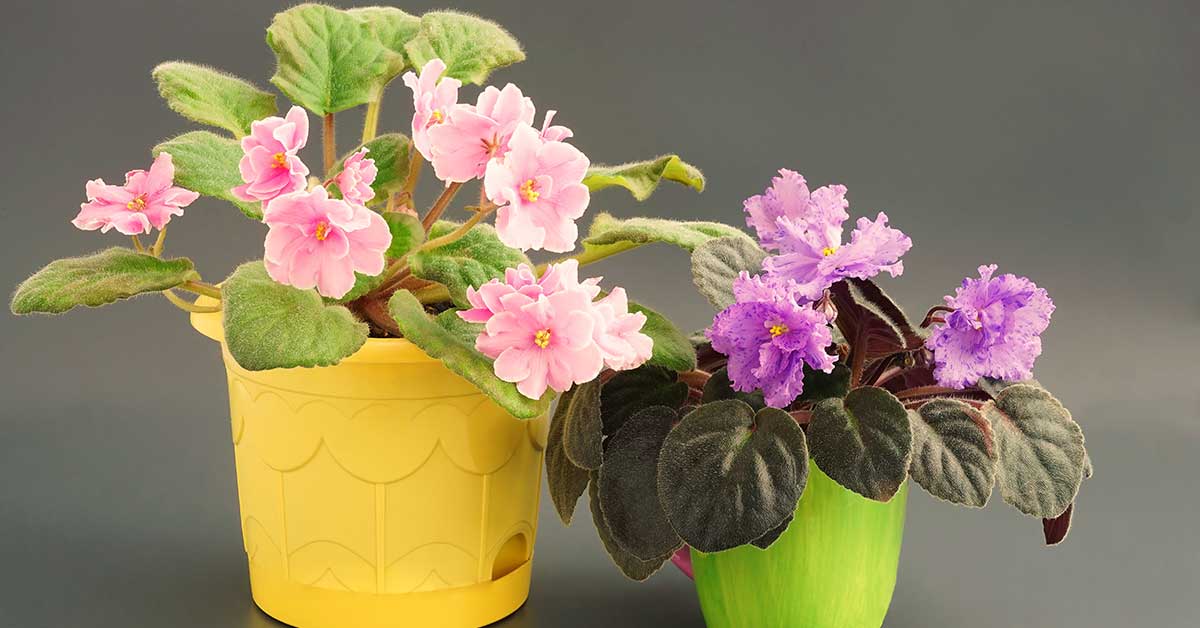African violets are a type of flowering houseplant that has been popular since the Victorian era. They are from the family Gesneriaceae, and there are more than 20 species native to Africa. They are small plants, usually reaching no more than 10 inches in height, with thick, fuzzy leaves and delicate, five-petaled flowers in shades of pink, purple, and white. They require bright, indirect sunlight, moist soil, and proper fertilizer to thrive. African violets are typically propagated through leaf cuttings and are relatively easy to care for, making them a popular choice for novice gardeners. In this article, we’ll explore how to prune African Violets to keep them happy and healthy.
Why Prune African Violets?
While these plants are hearty and low maintenance, they do require the right amount of pruning. These flowers are prone to leaf crowding, particularly near the top or crown. This is where new growth happens so make sure to keep an eye on it. It will create too many leaves and stop growing or blooming. It needs a certain amount of leaves to live but with too many, it will suffer. We will show you how to identify how to prune when to prune, and what to watch out for.
When to Prune African Violets
It may seem like a lot to remember but keeping your little violet healthy is pretty simple. You can prune your plant throughout the year but keep in mind that it blooms from spring to autumn. If you can try to let the violet rest during the winter when you can.
If an African violet is looking overgrown or unkempt, prune it. Generally, the leaves of an African violet should be plump and green, and the stems should be sturdy and upright. If the leaves are yellowing or curling, or the stems are becoming weak and floppy, it may be time to prune the plant. Don’t hesitate in removing any dead or drooping leaves, as these can take energy away from the plant.
African violets grow from their crown (top) outward. From this area, you will eventually have ‘suckers’ develop, and these also have to be removed. They look like baby versions of the mother plant when they get larger and are your plant’s effort to reproduce. We don’t recommend letting these grow as African Violets are very easy to propagate and these offshoots steal a large number of resources from your plant.
When looking to see what to prune look at your plant for directly above straight down. Look at the rings of leaves around the crown. Only the innermost 3-5 rows produce flower buds. Even if the bottom leaves are healthy, they still need to be trimmed to protect the overall plant. You should feel comfortable pruning a few leaves off your plant every month. African Violets are very easy to propagate if you don’t want to waste the leaves!
How to Prune African Violets
African Violets grow from their crown which is the in the very center at the top of the stem. Be gentle with this area and the 3-5 innermost rows. For equipment, you won’t need anything fancy, you can use your fingernails and snap leaves off at their base. If it’s a harder-to-reach area, you can use an exact knife or a clean pair of scissors.
Start by removing anything leaves that are wilting or dying. This includes leaves that wilting or starting to be discolored. Start with the lowest set of healthy leaves and snap them off. Always cut or snap leaves off as close to the main stalk to help with healing and aesthetics.
For any suckers around the crown, remove them as gently as you can. The crown is very delicate, take your time to free what you want to remove. For suckers in particular we recommend a steady hand with an Exact-O knife. If you damage the tiny leaves around the crown your flower will not be able to grow new foliage until it heals.
Once you are satisfied, add fertilizer. We recommend a mixture heavy in nitrogen, phosphorus, and potassium. This will help your plant heal and regain its strength before the next round of pruning.
When Not to Prune African Violets
You can prune your African Violet whenever it needs it and regularly as well. This violet grows very quickly so don’t worry too much as long as the crown doesn’t have offshoots and there are 3-5 rows of leaves radiating from the center. As this flower blooms from spring to autumn, you can can hold off on your maintenance during the winter. That being said, still take care of suckers and dead/wilting leaves as you see them.













